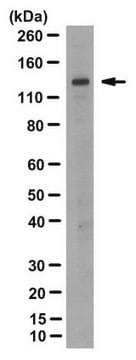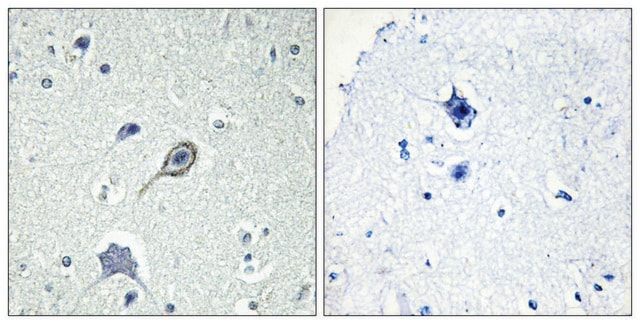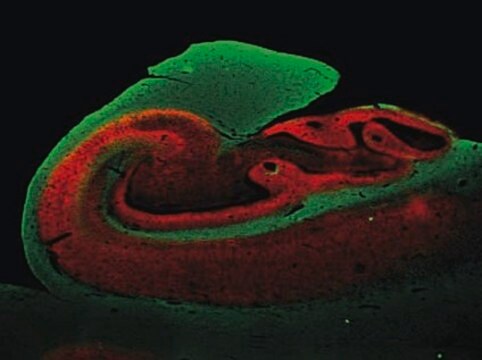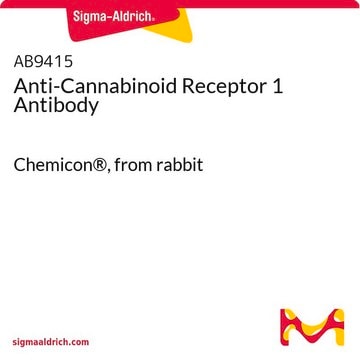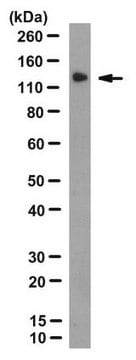MAB3504-I
Anti-Apaf-1 Antibody, clone 13F11
clone 13F11, from rat
Sinónimos:
APAF, APAF-1, APAF1, apoptotic peptidase activating factor 1, apoptotic protease activating factor 1, Apoptotic protease-activating factor 1, CED4, DKFZp781B1145, KIAA0413, Apoptotic protease-activating factor 1
About This Item
Productos recomendados
biological source
rat
Quality Level
antibody form
purified immunoglobulin
antibody product type
primary antibodies
clone
13F11, monoclonal
species reactivity
rat, mouse
packaging
antibody small pack of 25 μg
technique(s)
western blot: suitable
isotype
IgG2aκ
NCBI accession no.
UniProt accession no.
shipped in
ambient
target post-translational modification
unmodified
Gene Information
mouse ... Apaf1(11783)
General description
Specificity
Immunogen
Application
Apoptosis & Cancer
Western Blotting Analysis: A representative lot detected Apaf-1 in Western Blotting applications (Vaughn, A.E., et. al. (2007). Cell Death Differ. 14(5):973-81; Wright, K.M., et. al. (2004). J Cell Biol. 167(2):303-13).
Quality
Western Blotting Analysis: 1 ug/mL of this antibody detected Apaf-1 in mouse lymph node tissue lysate.
Target description
Linkage
Physical form
Storage and Stability
Other Notes
Disclaimer
Not finding the right product?
Try our Herramienta de selección de productos.
Storage Class
12 - Non Combustible Liquids
wgk_germany
WGK 2
Certificados de análisis (COA)
Busque Certificados de análisis (COA) introduciendo el número de lote del producto. Los números de lote se encuentran en la etiqueta del producto después de las palabras «Lot» o «Batch»
¿Ya tiene este producto?
Encuentre la documentación para los productos que ha comprado recientemente en la Biblioteca de documentos.
Nuestro equipo de científicos tiene experiencia en todas las áreas de investigación: Ciencias de la vida, Ciencia de los materiales, Síntesis química, Cromatografía, Analítica y muchas otras.
Póngase en contacto con el Servicio técnico
